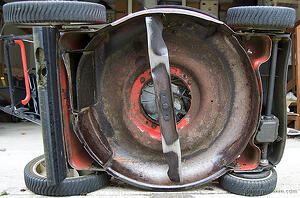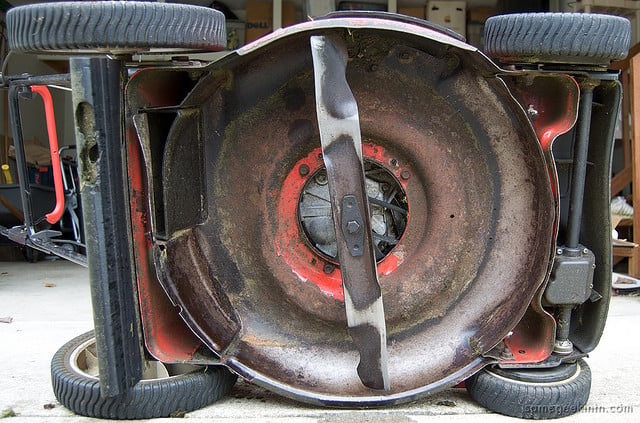It’s the time of the season to break out the lawn mowers!
We can all enjoy the wonderful aroma of cut grass and the beautifully manicured lawns. And landscaping companies certainly love the business.
But it’s important to remember that blades won’t just cut grass, weeds, and scrub—they’ll also cut people.
 More than 250,000 people are hurt each year in lawnmower-related accidents, reports the U.S. Consumer Product Safety Commission and the American Academy of Pediatrics. The majority of injuries are severed fingers and toes, limb amputations, broken bones, or eye injuries.
More than 250,000 people are hurt each year in lawnmower-related accidents, reports the U.S. Consumer Product Safety Commission and the American Academy of Pediatrics. The majority of injuries are severed fingers and toes, limb amputations, broken bones, or eye injuries.
These injuries are not only tragic in human terms, they usually lead to significant costs (e.g., workers comp, group medical premiums, lost work time, liability) for businesses that provide mowing services.
Keeping Safety on the Mind
Lawnmower safety isn’t rocket science. If you follow common-sense safety procedures—and check the operating condition of the mower before using it—mowing can be very safe.
The problem is that most people don’t think enough about the dangers of mowing. They just jump on and start mowing, without making sure the mower is working right or without being aware of the conditions around them. They’re not even thinking about safety—and that’s the ultimate cause of the vast majority of lawnmower accidents.
Here are some safety tips that everyone should follow before beginning to mow—whether it’s around the house or on the job.
- Clear the area to be mowed of ground debris (limbs, rocks, etc.), which can cause injury by becoming projectiles that fly into the person doing the mowing or other people nearby.
- Keep the area being mowed as clear as possible of everyone, particularly small children. (Backing over people with riding mowers is a common cause of mower accidents.)
- If the mowing area includes steep embankments, plan not to use a riding mower on those slopes.
- Dress in long pants, close-toed shoes with gripped soles, gloves, and safety glasses.
- Do a pre-use inspection of the lawnmower’s essential features (blades, guards, brakes, clutch, gas tank, levers, pedals, required safety decals, etc.).
This last step can be aided by use of The Checker inspection checklists for lawnmowers, which include all the necessary items for a circle check. This pre-use inspection is critical, because even safe operators can be injured if a worn, chipped blade breaks, or if a guard fails to stop flying debris that was missed in the pre-mowing prep.
That said, even the safest equipment can become dangerous if operators disable safety features, try to service mowers while they’re running, or use the mowers in a dangerous way. Ultimately, it’s the operator’s responsibility to know how to safely use a mower, which comes down to training and safety awareness.
That’s another benefit of using The Checker safety inspection checklists—the people doing the mowing will have to think about safety before they begin work, which hopefully will also increase their safety awareness as they mow.
Takeaway
With the summer comes grass to be cut, and also the potential for serious injury if lawnmowers aren’t safe to operate or are operated improperly. To help raise safety awareness, businesses can require pre-use inspections, which:
- Ensure lawnmowers are safe to use.
- Provide liability protection in case of an accident.
- Constantly remind mower operators of the importance of safety.
Image courtesy of Casey Fleser, Creative Commons.




